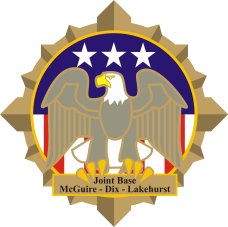Contact Information

For LOCKED ACCOUNTS or any issues with iSportsman, please email michael.luna.17@us.af.mil**
Location:
JB MDL, 2404 Vandenberg Ave, McGuire AFB NJ 08641
Contact Info:
CONTACT JBMDL NATURAL RESOURCES FOR QUESTIONS at Michael.luna.17@us.af.mil
or during business hours at (FT. DIX - MCGUIRE 609-754-1847)
After normal business hours - 640-248-7841
Other Contacts:
For JB MDL Conservation Club, contact JBMDL Natural Resources at 609-754-1847.
For information about the JBMDL Rod and Gun Club (Range 14), please visit: www.range-14.com
For pest issues unrelated to Hunting/Fishing/Trapping, contact JB MDL Pest Management at 609-754-2737
The 42,000-contiguous acres of JB MDL are home to more than 80 mission partners and 40 mission commanders providing a wide range of combat capability. The base spans more than 20 miles, from east to west. It is situated in the two largest counties in New Jersey—Burlington and Ocean—and includes portions of eight municipalities: the borough of Wrightstown and the townships of New Hanover, North Hanover, Pemberton, and Springfield, in Burlington County, and the townships of Jackson, Manchester, and Plumsted in Ocean County. The 87th Air Base Wing provides installation management support for 3,933 facilities. More than 44,000 airmen, soldiers, sailors, marines, coast guardsmen, civilians, and their family members live and work on and around JB MDL.
A Brief history of the instalation is located below.
|
|
McGuireMcGuire originated in 1941 as Fort Dix Army Air Force Base. Closed briefly after World War II, it reopened in 1948 as McGuire Air Force Base. The base was named after Maj. Thomas B. McGuire, Jr., Medal of Honor recipient, and the second leading ace in American history. |
Dix
The Dix installation originated in 1917 as Fort Dix, named in honor of Maj. Gen. John Adams Dix, a veteran of the War of 1812 and the Civil War, and a former United States Senator, Secretary of the Treasury and Governor of New York.
Dix has a history of mobilizing, training and demobilizing Soldiers from as early as World War I through the present day. In 1978, the first female recruits entered basic training at Fort Dix. In 1991, Dix trained Kuwaiti civilians in basic military skills so they could take part in their country's liberation.
Dix ended its active Army training mission in 1988 due to Base Realignment and Closure Commission recommendations. It began a new mission of mobilizing, deploying and demobilizing Soldiers and providing training areas for Reserve and National Guard Soldiers. In 1994, the United States Air Force Expeditionary Center was established as the Air Mobility Warfare Center on Dix.
Lakehurst
Lakehurst's history begins as a munitions-testing site for the Imperial Russian Army in 1916. It was then gained by the U.S. Army as Camp Kendrick during World War 1. The Navy purchased the property in 1921 for use as an airship station and renamed it Naval Air Station Lakehurst.
The Navy's lighter-than-air program was conducted at Lakehurst through the 1930s. During World War II, anti-submarine patrol blimps were operated from Lakehurst. Since the 1950s, aviation boatswain's mates have been trained at Lakehurst to operate catapults and arresting systems on aircraft carriers. Lakehurst conducts the unique mission of supporting and developing the Aircraft Launch and Recovery Equipment and Support Equipment for naval aviation. The Electromagnetic Aircraft Launch System and the Advanced Arresting Gear system that will replace the existing steam catapults and the Mk-7 arresting gear are being developed and tested at Lakehurst at full-scale shipboard representative test facilities here.

